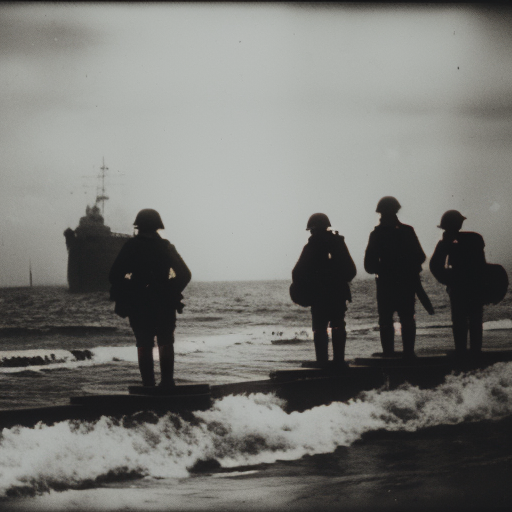Battle of Dogger Bank: A Naval Clash in World War I
The Battle of Dogger Bank was a naval engagement that took place on January 24, 1915, during World War I. It occurred in the North Sea, near the Dogger Bank, a large sandbank located in the central part of the sea. The battle was fought between the British Royal Navy and the German Imperial Navy.
Background:
At the outbreak of World War I, the British Royal Navy had established a blockade of Germany to restrict its access to vital supplies. In response, the German Navy sought to disrupt British trade and weaken the blockade. The German High Seas Fleet, under the command of Admiral Friedrich von Ingenohl, aimed to engage and defeat a portion of the British Grand Fleet.
British Intelligence and the Battle Plan:
British intelligence intercepted and deciphered German radio signals, allowing them to gain valuable information about the German fleet’s movements. The British Admiralty decided to exploit this intelligence and devised a plan to intercept and engage the German fleet.
The Battle:
On January 24, 1915, the British Grand Fleet, led by Admiral Sir David Beatty, set sail from its base at Scapa Flow in the Orkney Islands. The fleet consisted of six battlecruisers, accompanied by several light cruisers and destroyers. The German High Seas Fleet, consisting of four battlecruisers and several smaller vessels, was already at sea.
The two fleets encountered each other near the Dogger Bank. The British battlecruisers, with their superior speed and firepower, quickly gained the advantage. The first shots were fired by the British battlecruiser HMS Lion, which targeted the German flagship SMS Seydlitz.
The battle continued for several hours, with both sides exchanging heavy fire. The British battlecruiser HMS Tiger was hit by a shell from the German battlecruiser SMS Derfflinger, causing significant damage. However, the British ships managed to inflict severe damage on the German battlecruisers.
The German battlecruiser SMS Blücher was particularly vulnerable and became the primary target for the British fleet. It was eventually sunk after sustaining heavy damage. The remaining German battlecruisers, realizing they were outmatched, turned and fled towards the safety of their own waters.
The British pursued the retreating German fleet, but due to poor visibility and concerns about German submarines, the chase was eventually called off. The British fleet returned to its base, having achieved a significant victory.
Aftermath:
The Battle of Dogger Bank was a clear victory for the British Royal Navy. The German Navy suffered heavy losses, with the sinking of SMS Blücher and significant damage to their other battlecruisers. The British, on the other hand, suffered minimal losses, with only minor damage to HMS Tiger.
The battle highlighted the vulnerability of battlecruisers to enemy fire, as demonstrated by the damage inflicted on HMS Tiger. This led to a reassessment of battlecruiser design and tactics by both the British and German navies.
The Battle of Dogger Bank also had broader strategic implications. It boosted British morale and demonstrated the effectiveness of British intelligence in intercepting and deciphering German communications. It also reinforced the British blockade of Germany and further weakened the German Navy’s ability to challenge British naval supremacy.
In conclusion, the Battle of Dogger Bank was a significant naval engagement during World War I. It showcased the British Royal Navy’s superiority and highlighted the importance of intelligence in naval warfare. The battle had a lasting impact on naval tactics and further tilted the balance of power in favor of the British in the North Sea.












